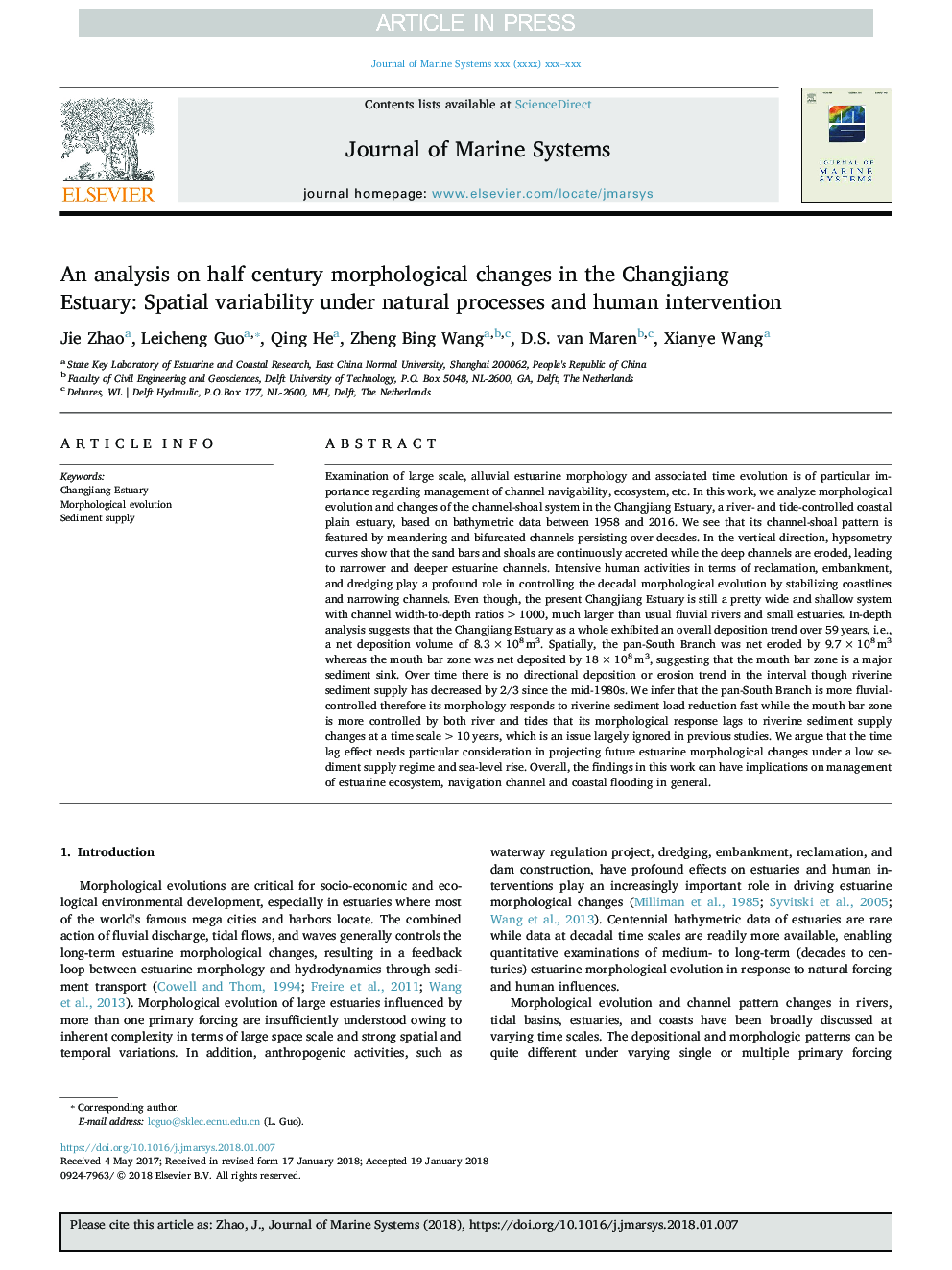| کد مقاله | کد نشریه | سال انتشار | مقاله انگلیسی | نسخه تمام متن |
|---|---|---|---|---|
| 8885951 | 1627249 | 2018 | 12 صفحه PDF | دانلود رایگان |
عنوان انگلیسی مقاله ISI
An analysis on half century morphological changes in the Changjiang Estuary: Spatial variability under natural processes and human intervention
ترجمه فارسی عنوان
تجزیه و تحلیل تغییرات مورفولوژیکی نیم قرن در رودخانه چانگ لیانگ: تنوع فضایی در فرایندهای طبیعی و دخالت
دانلود مقاله + سفارش ترجمه
دانلود مقاله ISI انگلیسی
رایگان برای ایرانیان
کلمات کلیدی
رودخانه چانگ لیانگ، تکامل مورفولوژیکی، عرضه رسوب،
موضوعات مرتبط
مهندسی و علوم پایه
علوم زمین و سیارات
اقیانوس شناسی
چکیده انگلیسی
Examination of large scale, alluvial estuarine morphology and associated time evolution is of particular importance regarding management of channel navigability, ecosystem, etc. In this work, we analyze morphological evolution and changes of the channel-shoal system in the Changjiang Estuary, a river- and tide-controlled coastal plain estuary, based on bathymetric data between 1958 and 2016. We see that its channel-shoal pattern is featured by meandering and bifurcated channels persisting over decades. In the vertical direction, hypsometry curves show that the sand bars and shoals are continuously accreted while the deep channels are eroded, leading to narrower and deeper estuarine channels. Intensive human activities in terms of reclamation, embankment, and dredging play a profound role in controlling the decadal morphological evolution by stabilizing coastlines and narrowing channels. Even though, the present Changjiang Estuary is still a pretty wide and shallow system with channel width-to-depth ratios >1000, much larger than usual fluvial rivers and small estuaries. In-depth analysis suggests that the Changjiang Estuary as a whole exhibited an overall deposition trend over 59â¯years, i.e., a net deposition volume of 8.3â¯Ãâ¯108â¯m3. Spatially, the pan-South Branch was net eroded by 9.7â¯Ãâ¯108â¯m3 whereas the mouth bar zone was net deposited by 18â¯Ãâ¯108â¯m3, suggesting that the mouth bar zone is a major sediment sink. Over time there is no directional deposition or erosion trend in the interval though riverine sediment supply has decreased by 2/3 since the mid-1980s. We infer that the pan-South Branch is more fluvial-controlled therefore its morphology responds to riverine sediment load reduction fast while the mouth bar zone is more controlled by both river and tides that its morphological response lags to riverine sediment supply changes at a time scale >10â¯years, which is an issue largely ignored in previous studies. We argue that the time lag effect needs particular consideration in projecting future estuarine morphological changes under a low sediment supply regime and sea-level rise. Overall, the findings in this work can have implications on management of estuarine ecosystem, navigation channel and coastal flooding in general.
ناشر
Database: Elsevier - ScienceDirect (ساینس دایرکت)
Journal: Journal of Marine Systems - Volume 181, May 2018, Pages 25-36
Journal: Journal of Marine Systems - Volume 181, May 2018, Pages 25-36
نویسندگان
Jie Zhao, Leicheng Guo, Qing He, Zheng Bing Wang, D.S. van Maren, Xianye Wang,
